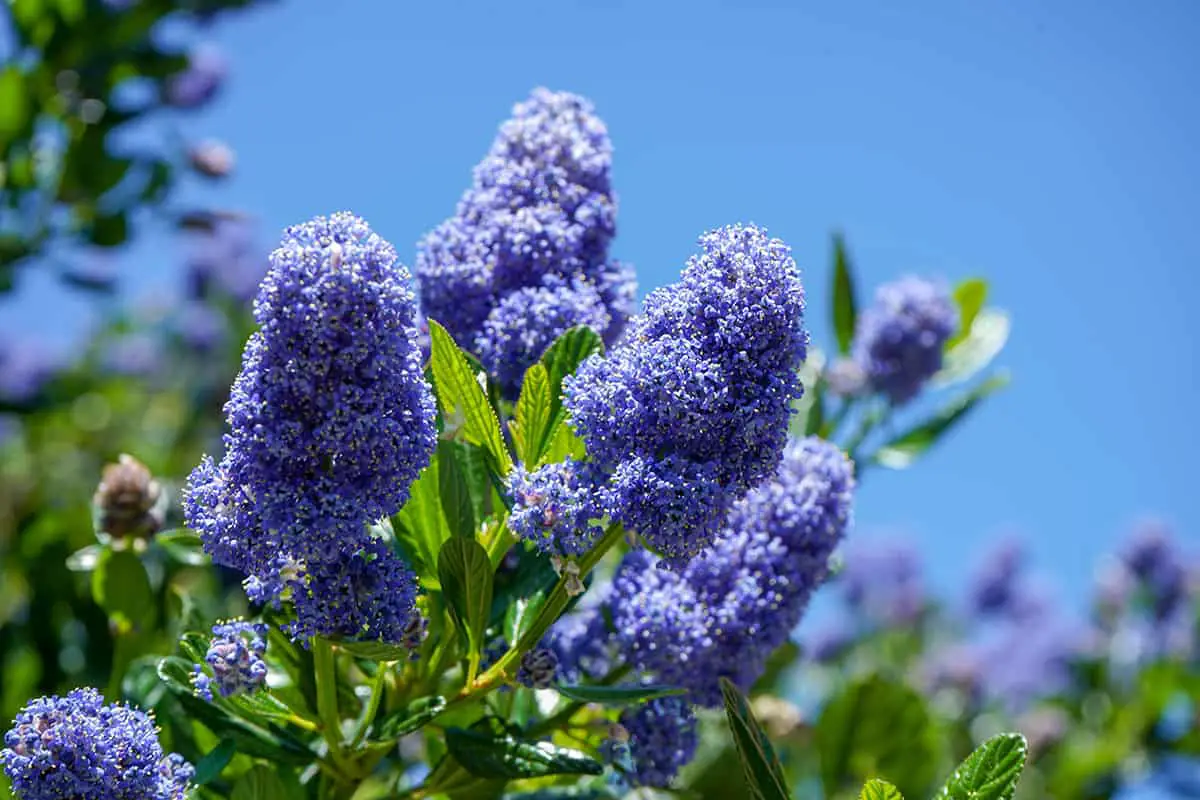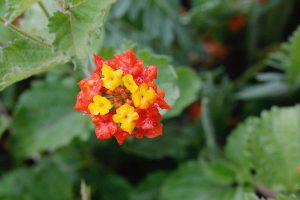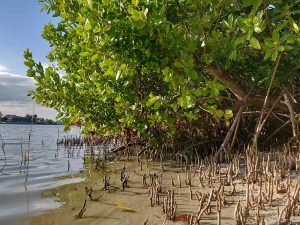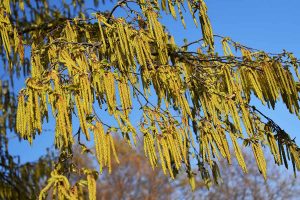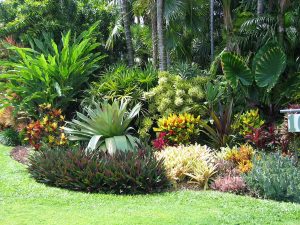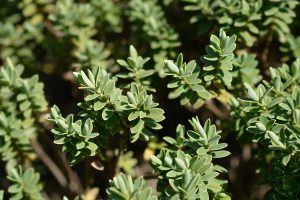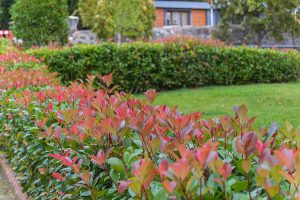Invasive roots are those which grow rapidly and vigorously to seek out sources of moisture. These will typically be strong and powerful roots that have a tendency to spread far and wide, wreaking havoc on structures they come into contact with, such as pipes and sewers.
Some plants are renowned for having invasive roots and non-shallow roots, such as Willows, Maples, and Japanese Knotweed, while others may be a surprise to you. It’s important to have an understanding of which plants have invasive roots so that you can avoid planting these close to your home.
Table of Contents
Why Can Invasive Roots Be a Problem?
Uneven ground
Invasive roots can become an issue when the roots emerge from the surface of the ground to form bumps on your garden, path, or driveway, which can become dangerous trip hazards. If you have a patio or a block-paved area around your property, invasive roots can cause these to crack, which also presents a dangerous hazard to walk across.
This can even become problematic for vehicles; for example, a broken concrete slab on the driveway could result in a tire puncture. If you have young children, invasive roots can be especially problematic because they are less steady on their feet and are more prone to fall over as a result of uneven ground.
Pipe and plumbing damage
One of the common issues that occur as a result of invasive roots is damage to pipes, plumbing, and sewers. Since underground pipes and sewers contain water, some plant roots are drawn to these structures because they seek out moisture. One of the most worrying things about the way invasive roots can damage pipes is that it’s very hard to diagnose.
The problems that invasive roots usually cause to sewers and plumbing can easily be mistaken for more routine issues, making it a long and difficult problem to resolve. Signs that there are roots in your sewer line pipes or drains include frequent clogs in sinks, showers, and toilets or slow drainage.
Gurgling sounds are another sign that invasive roots could be causing problems. Roots can cause clogs in the main water line, and this would present as low water pressure and slow emptying of drains in the home.
In the worst case, roots could cause a major crack in pipes, and this will result in a sudden loss of water pressure, bad smells coming from outside your home, strange sounds coming from the pipes, and a steep rise in your water bill.
Destabilize property foundations
If plants with invasive roots get close to your home, then this can cause very expensive problems. The most invasive roots can cause damage to the foundations of a property, and this will usually reveal itself as cracks in walls, windows shattering with no other explanation, buckling doors that no longer fit into the frames, and uneven windows and exterior doors.
Fortunately, this type of damage is among the most unlikely that invasive roots will cause.
Hard to remove
One of the most annoying things about invasive roots is that they are hard to remove. If you want to redesign your garden and plan to remove a plant, you will struggle if the plant in question has invasive roots.
Strong root systems can go deep into the ground and spread out far and wide. Unless you remove all of the root systems, the plant could regrow from the remaining roots in the ground.
Shrubs with Non-Invasive Root Systems
Non-invasive roots are roots of plants, specifically trees, and shrubs, that do not spread aggressively and cause damage to sidewalks, sewers, or buildings.
Most often, the types of plants with invasive root systems are shrubs and trees. If you want to create a privacy screening, a hedge, or a border of greenery around your home, then evergreen shrubs are the ideal solution, but of course, you won’t want any invasive roots getting close to your home and causing problems.
Fortunately, there are a number of evergreen shrubs that do not have invasive roots, which we will reveal here.
California Lilac
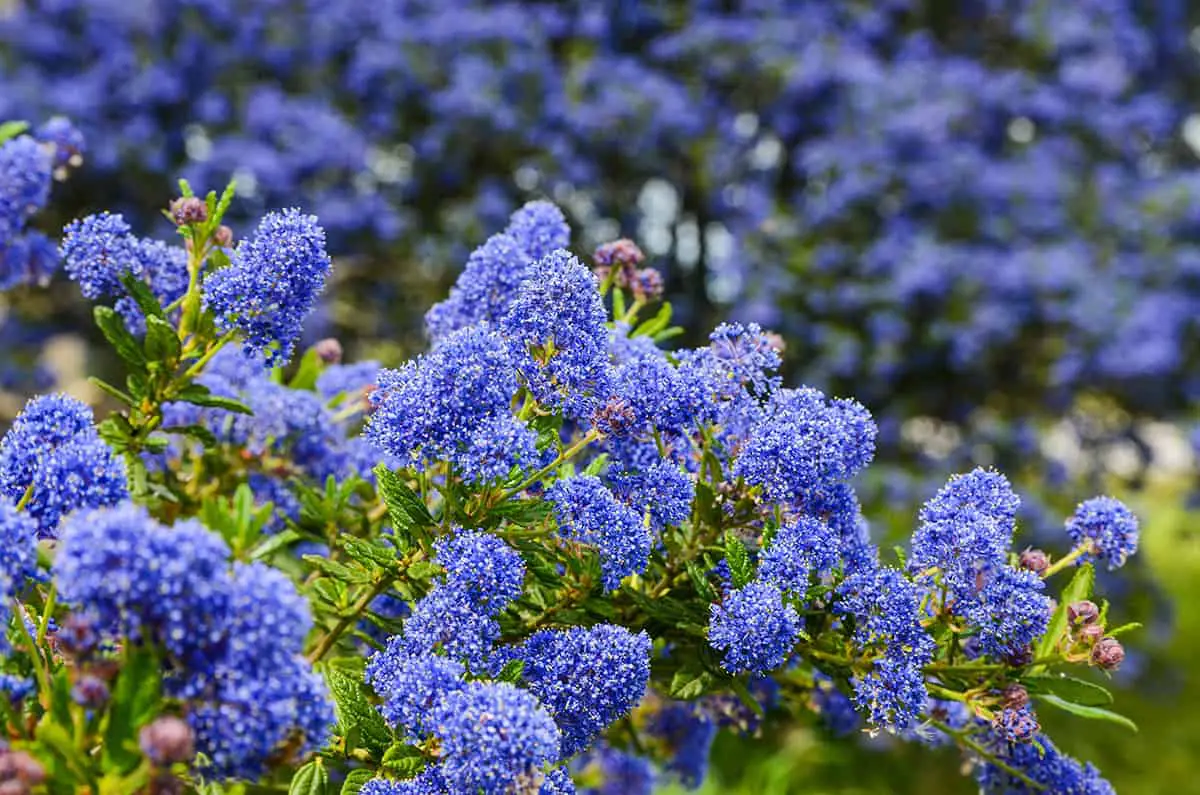
- Botanical name: Ceanothus sp.
- Family: Rhamnaceae
- USDA hardiness zones: 7 – 11
- Mature height: Up to 20 feet
- Mature spread: Up to 20 feet
Also known as Soap Bush and Buckbrush, the California Lilac refers to a genus of shrubs which encompass over 50 different species. These are native to much of North America, and are known for producing dainty clusters of blue flowers. The blooming period will depend on the species of the shrub, but these will typically flower in late spring or early summer.
They are prolific bloomers, with flowers seemingly cloaking the entire bush in a burst of blue. These plants can range in size but will generally form medium to large-sized shrubs. They have gently arching branches which are great for creating informal hedging or privacy screen.
The root system of the California Lilac can spread far and wide, but it will not become invasive or cause damage to buildings. The plant will send down a taproot which can go deep into the soil and make the shrub difficult to remove if you want to transfer it to another location, but it will not cause any issues to nearby structures.
California Lilac roots are also not known to travel upwards to ground level, so they don’t create problems with cracking concrete or uneven ground. These plants thrive in most soil types and can adapt to clay, sandy, loamy, or rocky soils.
They prefer soils that are moderately moist or dry and can tolerate periods of drought. They fare best in a sheltered position and should be grown in full sun.
Boxwood
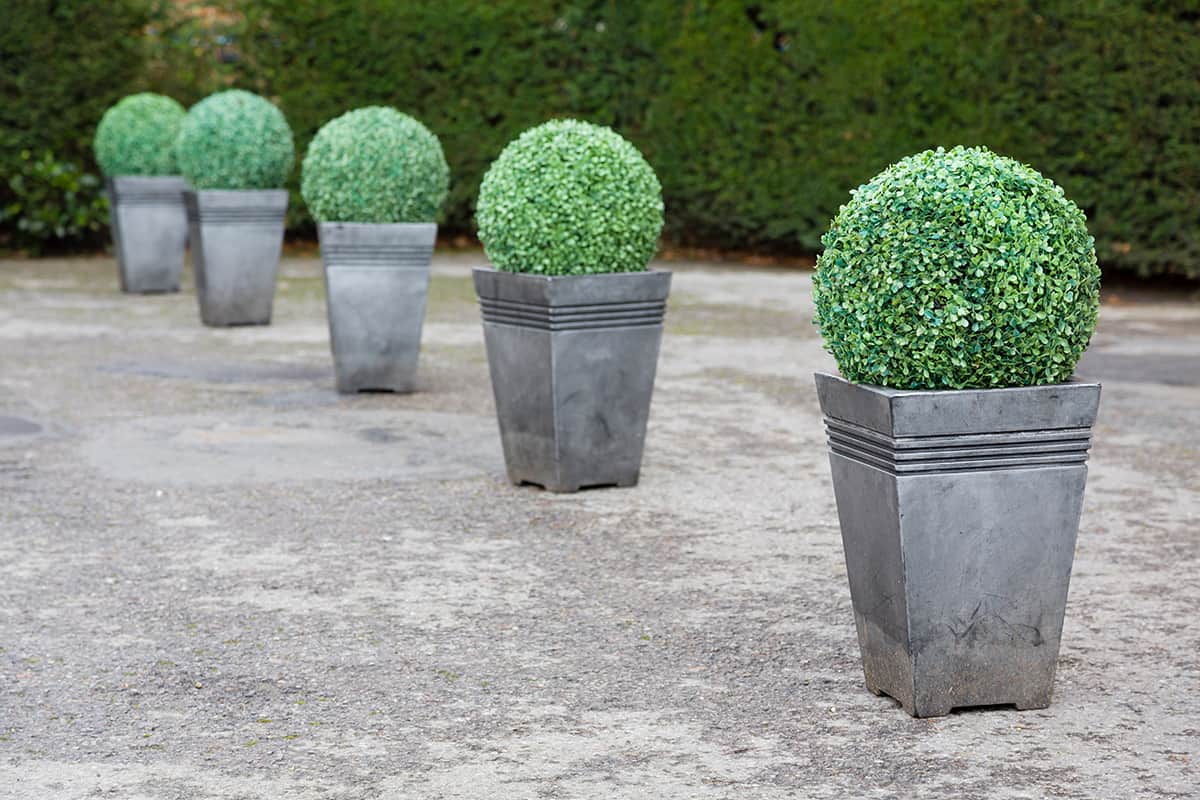
- Botanical name: Buxus sempervirens
- Family: Buxaceae
- USDA hardiness zones: 5 – 9
- Mature height: Up to 30 feet
- Mature spread: Up to 10 feet
Boxwoods are evergreen shrubs that are native to Africa, Asia, and Europe. They can grow to be very large, but when grown as specimens in the garden they will rarely exceed 6 feet in height, with many dwarf varieties also being very popular. Boxwood are densely branched, with each branch heavily clothed in green foliage which retains its color all year round.
The dense nature of these shrubs makes them ideal for creating privacy screens or hedging, and they are excellent for pruning into neat shapes. Boxwood can sometimes be difficult to care for because they have very shallow roots which cannot seek moisture in the depths of the soil.
This means that you need to always make sure that the top layers of Boxwoods soil have enough moisture to keep it thriving. The advantage of the shallow root system of this plant is that it is non-invasive. The roots can spread quite far, but they will remain in the top 12 inches of the soil and, therefore, not go deep enough to become problems for sewers or pipework.
The roots are typically quite thin and stringy, so they do not cause structural issues to buildings. Plant Boxwood in partial shade, in a well-draining soil that is kept continually moist. Mulch can help to reduce moisture evaporation and keep roots healthy.
Evergreen Azalea
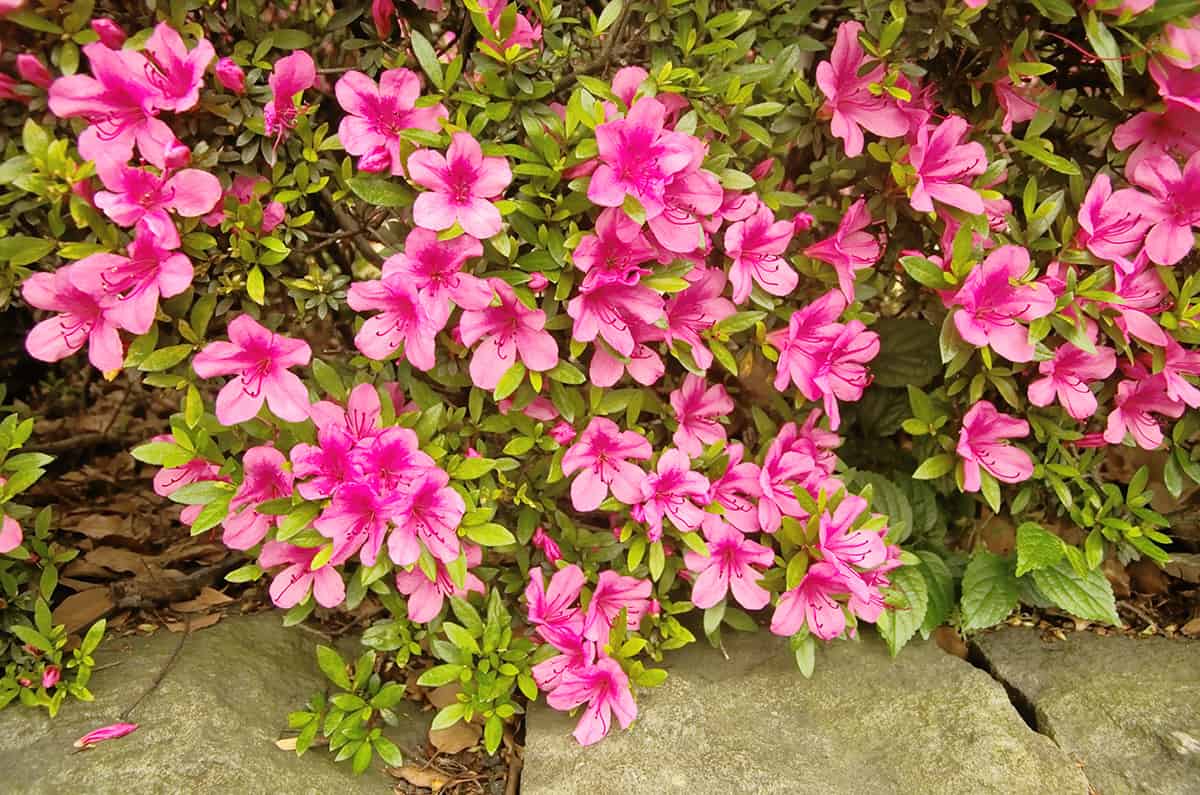
- Botanical name: Rhododendron sp.
- Family: Ericaceae
- USDA hardiness zones: 3 – 11
- Mature height: 3 to 8 feet
- Mature spread: 2 to 8 feet
Evergreen azaleas are native to China, and there are also some hybrid varieties, most notably the Encore Series, which was developed at the University of Minnesota. Evergreen azaleas include Kyushu azaleas (Rhododendron kiusianum), Snow azaleas (Rhododendron mucronatum), Wild thyme azalea (Rhododendron serpyllifolium), and Southern Indian azaleas (Rhododendron Indicum).
There are many species of azalea native to the US, but all of these are deciduous. Azaleas are hugely popular for their bright and beautiful flowers, which come in a wide range of colors. Evergreen azaleas are particularly attractive because they retain interest all year round. They have compact growth habits and are useful for planting in partial shade.
The root system of azaleas remains in the top 12 inches of the soil, spreading out sideways instead of deep into the soil. This means that the roots do not become invasive to underground structures such as sewers. Azaleas grow best in acidic soil which is well draining.
Common Juniper
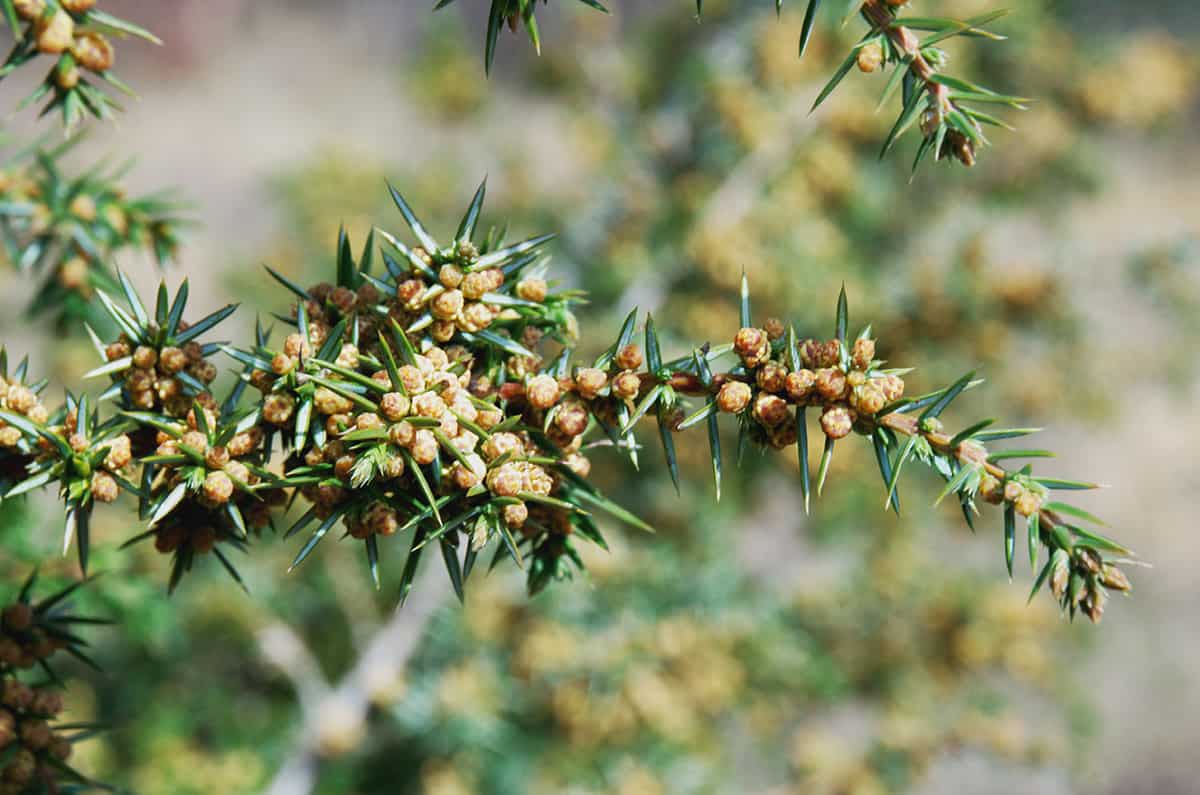
- Botanical name: Juniperus communis
- Family: Cupressaceae
- USDA hardiness zones: 2 – 6
- Mature height: Up to 25 feet
- Mature spread: Up to 12 feet
The Common Juniper is an evergreen coniferous shrub which can also be grown as a small tree. These are one of the most widely distributed shrubs across the globe, with attractive needle-like foliage which densely covers the spreading branches of the plant. In spring, small flowers appear on the Common Juniper, and these develop into small cones which visually resemble blueberries. The cones are an important source of food for wildlife, and they are also used in the flavoring of gin.
Common Juniper performs best in full sun, and it will adapt to a wide range of soil types, though it prefers well draining soils. These evergreen shrubs have shallow fibrous roots which prevent them from becoming invasive or causing problems underground.
They will also have a taproot that travels deep into the ground to find moisture and sustain the plant during periods of drought, but these are not known to cause problems with sewage systems, pipework, or property foundations.
American Arborvitae
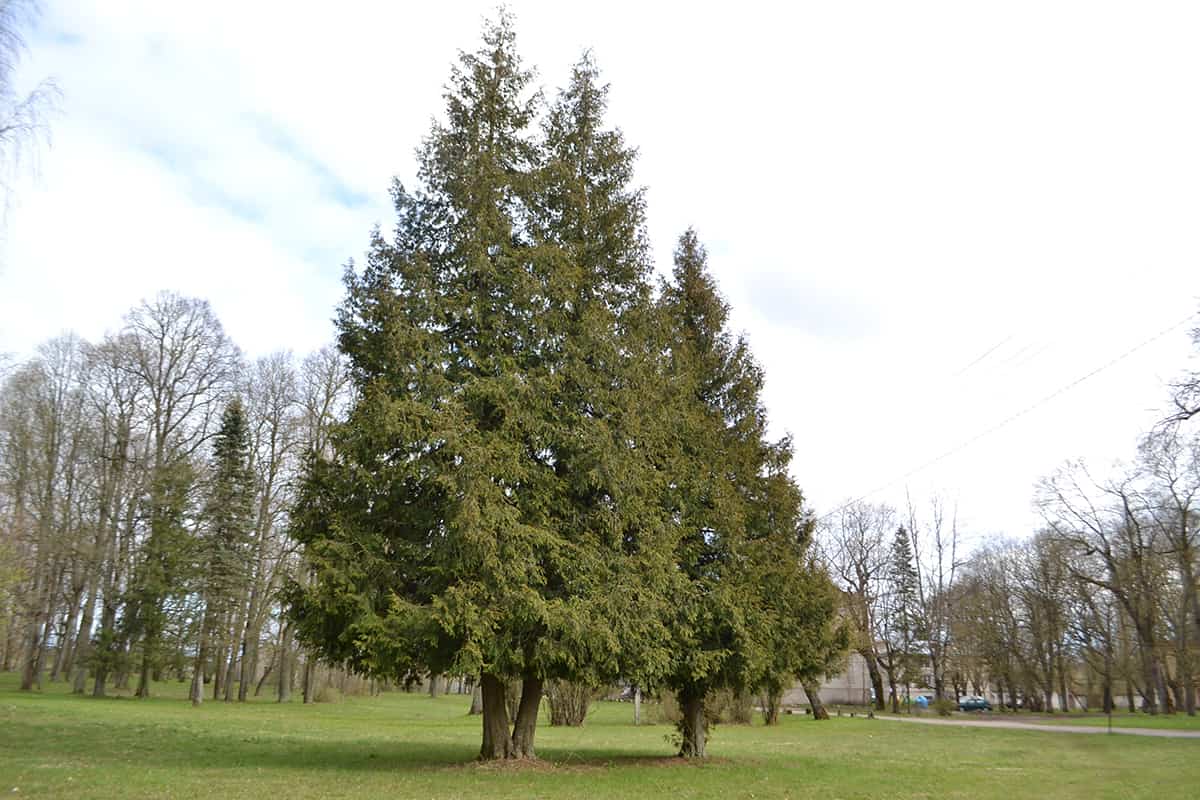
- Botanical name: Thuja occidentalis
- Family: Cupressaceae
- USDA hardiness zones: 2 – 7
- Mature height: Up to 40 feet
- Mature spread: Up to 15 feet
American Arborvitaes are evergreen shrubs or trees which are native to the northeastern United States and eastern Canada. They produce sprays of green scale-like foliage, which is densely packed to form lush conifers. These plants work well as single specimens, and they can also be used in rows to form hedging. The American Arborvitae is known for its shallow root system which is made up of fibrous tissue.
The roots of smaller American Arborvitae will rarely extend deeper than 8 inches below the surface of the soil and will not exceed the dripline of the plant. The dripline refers to the furthest point that the canopy of the plant reaches. In larger Arborvitae shrubs, the root system will remain in the upper 2 feet of the soil, which anchors the sizable plants without causing any damage below ground level.
The fact that these plants do not have extensive root systems which can reach deep into the soil means that they are unable to withstand periods of drought.
Instead, they rely on rainwater within the top few inches of the soil for sustenance. These shrubs can adapt to a wide range of soils as long as they are kept moist, including clay, sand, and rocky soils. They will also tolerate waterlogged soils. Grow the American Arborvitae in a position of full sun, with dappled shade in hot climates.
Mountain Pine
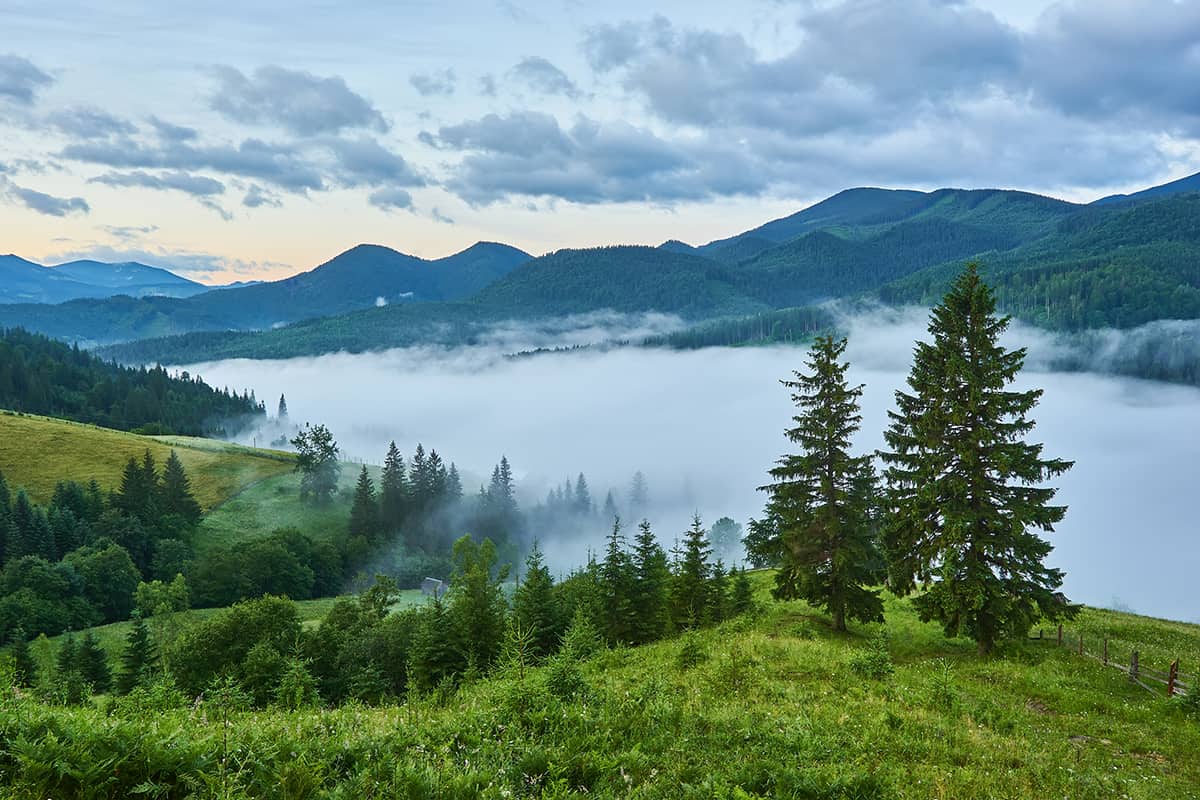
- Botanical name: Pinus mugo
- Family: Pinaceae
- USDA hardiness zones: 3 – 7
- Mature height: 1 to 8 feet
- Mature spread: 1 to 16 feet
Mountain Pine goes by several common names, including Mugo Pine, Bog Pine, Creeping Pine, Dwarf Mountain Pine, and Scrub Mountain Pine. It is commonly a low-growing evergreen shrub that forms dense mats of foliage, but it can also grow as a shrubby bush. The foliage of the plant is needle-like and retains its color throughout the year.
These are typically slow-growing plants that perform best in full sun. They can adapt well to a range of soils and are often used for soil stabilization in coastal regions. Mountain Pine plants have shallow root systems which can spread wider than the total height of the shrub, but they remain within the uppermost layers of the soil.
This means that the plant relies on moisture in the top part of the soil, and therefore additional watering may be required during periods of drought.
Mulching can help to retain moisture by preventing water evaporation. Dwarf varieties of Mountain Pine are a good option for attractive year-round ground cover or low borders, while the larger varieties of these shrubs are ideal for creating hedges and privacy borders around a property without risking damage to structures beneath the surface of the ground.
